Writer’s Note
I’ve always loved sports. I was raised in a home where games were sacred where Sunday meant church, dinner, and the Knicks or Jets depending on the season. We had rituals: hollering at referees from the couch, passing stats like scripture, debating who had the better glove, the tighter crossover. I played it all growing up: basketball, football, baseball right through high school. My body moved to the rhythm of competition. And even now, I still watch. Still ride for my teams. Go Knicks, Jets, and Yankees.
But loving the game has never required me to lie about what it is or who it fails. To watch sports as a Black person in America is to know the game was never just a game. It is empire in motion. It is resistance in motion. It is the field, the plantation, the stage, the altar. And the question is always this: when the camera pans to the Black body, is it being used or using the moment to do something more?
The Original Stakes Were Life or Death
There was a time when playing while Black was itself a radical act.
Before the endorsements, before the soundbites and sneaker deals, there was a generation of athletes who knew their sweat might cost them their future, and did it anyway. Paul Robeson, a colossus of a man, stood not just as an athlete but as an artist, a linguist, a global freedom fighter. He played for Rutgers, yes but it was the world he really showed up for. When asked why he continued to speak out, he answered plainly: “The artist must take sides.”
Jackie Robinson, often hollowed into a myth, lived with a tongue bitten bloody. His rage was his daily bread. Behind the smile was a man who carried the weight of respectability on his back, but understood that the audience was always watching to see if he’d snap. Muhammad Ali said no — no to Vietnam, no to silence, no to surrender. They stripped his title. He kept his dignity.
Tommie Smith and John Carlos, on that Olympic podium in 1968, didn’t just raise their fists, they lifted an entire people’s grief and pride above the crowd. And Bill Russell, stoic and brilliant, led not only on the court but through a deep, demanding presence that said: We don’t just play here. We live here too.
Curt Flood, perhaps the least sung of them all, challenged baseball’s ownership structure and forever altered the rights of players. His battle cost him his career, but gave rise to the free agency that now fills modern athletes' pockets. And Jim Brown, complex and contradictory, still recognized the necessity of gathering Black athletes for causes larger than touchdowns or trophies.
These were not men interested in applause. They were interested in freedom.
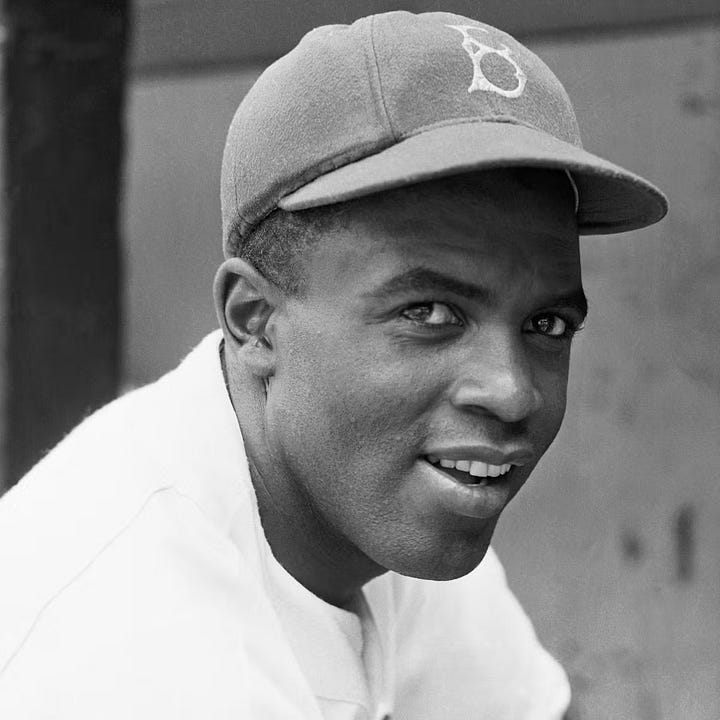

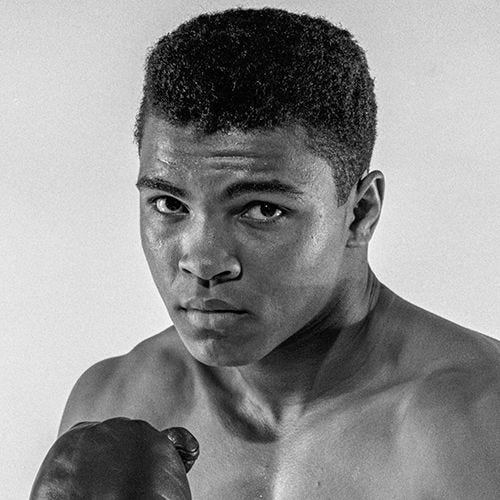

The New Century and the Camera’s Return
The 21st century brought with it a different kind of reckoning. Not a louder one, but a more complicated one. Visibility, once a risk, became currency. And for Black athletes, the stage was no longer just the court, the field, the track, it was the brand deal, the post-game presser, the Instagram livestream, the Nike ad campaign. The arena stretched into every pocket of American life, and yet, the fight for dignity remained unchanged.
They were no longer silenced by force, but by finesse. By PR firms. By contracts laced with clauses. By agents and brand managers who spoke the language of safety, but only safety for the bottom line. Activism was now to be approved, to be audited for tone, to be measured by how well it could be monetized.
Still, some found a way to speak, to bend the microphone back toward truth.
LeBron James, with a face known in every zip code, wore a hoodie in honor of Trayvon Martin and reminded America that wealth had not made him bulletproof. When Laura Ingraham told him to “shut up and dribble,” he did the opposite, opening schools, funding voter engagement, and carving space for other players to follow his lead. His was not Ali’s refusal, but a new model; a quieter build, brick by brick, under corporate spotlights that flickered depending on the moment.
Serena Williams had to fight not only for her wins but for the right to exist as she was muscular, dark-skinned, unapologetically Black in a sport that whispered about her with the same racism it laced into rulebooks and dress codes. Her very presence, her body, her hair, her scream became a protest against the dainty, whitewashed femininity tennis demanded. They mocked her emotions, fined her for outfits, and questioned her motherhood. Still, she kept serving, kept winning, and kept surviving.
Naomi Osaka, quieter than Serena but no less revolutionary, brought the protest to her mask, literally. Each match of the 2020 US Open, she wore the name of a Black person killed by police. Breonna Taylor. George Floyd. Elijah McClain. The air around her was heavy, deliberate. And when the world demanded she perform through pain, she said no. Stepped away. Named her mental health as sacred. Even her silence spoke volumes.
And then, Colin Kaepernick.
The quarterback who knelt. Who said it plainly: I will not stand for a flag that oppresses my people. He lost his job, lost his endorsements. Became a pariah to the league he once electrified. But then, slowly, awkwardly, insincerely the same league began using his image. Began printing slogans on jerseys. End racism, they said, after blackballing the one man who called it out. Kaepernick became both martyr and mannequin, his resistance repackaged for profit by the very system that punished it.
This era was not without courage. But the battleground had shifted.
Hashtags replaced handcuffs. Sponsorships shaped the speech. Resistance came with risks, but often not to life or freedom. Instead, the risk was to legacy, to income, to reputation. Protest had to be palatable now, wrapped in digestible quotes and posted on branded slides. The revolution had to be timed, not with marches, but with product drops.
And still, even among the brave, the cost was steep. For every fist raised in defiance, there were ten more folded neatly into corporate prayer, waiting for approval, hoping the check would clear. Visibility was no longer the victory. It was the trap.
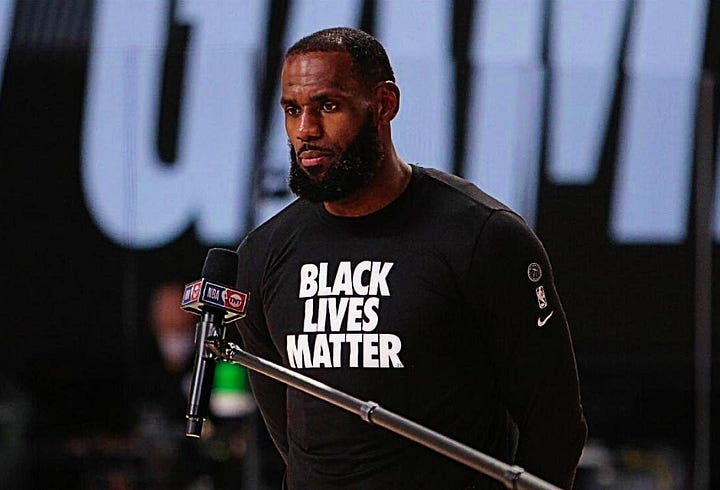



The Rise of the Unholy Alliance
There is, however, another story, one that cannot be left untouched. A quieter betrayal wrapped in endorsement deals and luxury cleats. A distortion of legacy masquerading as individual choice.
The rise of Tr*mpism didn’t just awaken the white right. It emboldened a different kind of spectacle; Black athletes who, either through ambition, confusion, fear, or betrayal, aligned themselves with the very systems built to cage them. Men who, in the name of bootstraps and bottom lines, chose proximity to whiteness over solidarity with the people who look like them. It wasn’t new, but it was more visible now, more grotesque in its transparency.
Herschel Walker stood at the center of it, not just misguided, but puppeteered, propped up like a cardboard cutout, made to echo talking points he barely seemed to understand. A man who once ran through defenses now sprinted in service of white nationalism, shaking hands with men who would have spat on him a generation ago.
Mike Tyson, who once called himself a revolutionary, now mumbled praise for the same man who spent decades vilifying Black boys and calling for their execution: Tr*mp, the architect of the Central Park Five’s media crucifixion. The irony hung in the air like smoke and yet, Tyson smiled through it.
Lawrence Taylor, a giant of his era, seemingly forgot the bars he once barely escaped. The crack era, the arrests, the headlines, all that history erased in exchange for political comfort and cushioned acceptance.
Patrick Mahomes, dazzling on the field, became bafflingly muted off of it. As protests erupted and young Black boys were gunned down in cities not far from where he threw touchdowns, he offered silence, not the contemplative kind, but the polished, intentional quiet of a man who understood that neutrality sells better than truth. His talent was undeniable. His politics, carefully veiled. But the veil slips, and when it does, the silence becomes harder to excuse.
His family, too, posed smiling with Trump in a photo that spread like wildfire, a moment that made their allegiances unmistakably clear. And still, from Mahomes: nothing. No statement, no distance, no discomfort. Just a passive co-sign rooted in familial comfort and career calculus.
In a time when fascism wears a suit and sits courtside, silence is no longer apolitical. It is a choice. A stance. A complicity wrapped in soft tones and sponsorship deals. And when your last name reverberates in millions of households, when Black children wear your jersey like armor, pretending your legs are their own that silence becomes betrayal.
And Saquon Barkley, grinning alongside 47 like the moment wasn’t steeped in blood. The photo op, all teeth, all ignorance, landed like a slap. Not just to his fans, but to every Black child watching, wondering how a man who ran like freedom could stand so close to the enemy of it.
These names matter not simply because they voted one way or another, but because they used their platforms not to challenge power, but to validate it. To reinforce the lie that empire is colorblind, that money cures oppression, that a jersey can wash away complicity.
To see a Black athlete align themselves with authoritarianism, to cheerlead for policies that hurt Black families, queer youth, working mothers, immigrants, teachers, the poor — is to witness something hollowing. A betrayal dressed in athletic tape and Nike tech. It is the dream, not deferred, but defiled, not by whip, but by wallet.
Baldwin told us long ago, “I can’t believe what you say, because I see what you do.” The camera doesn’t lie. And neither do endorsements.
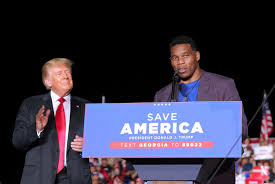
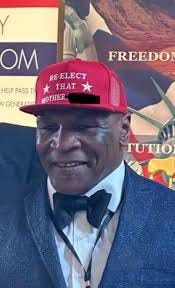
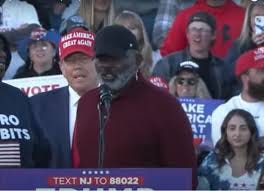
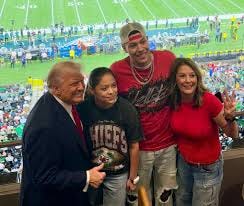
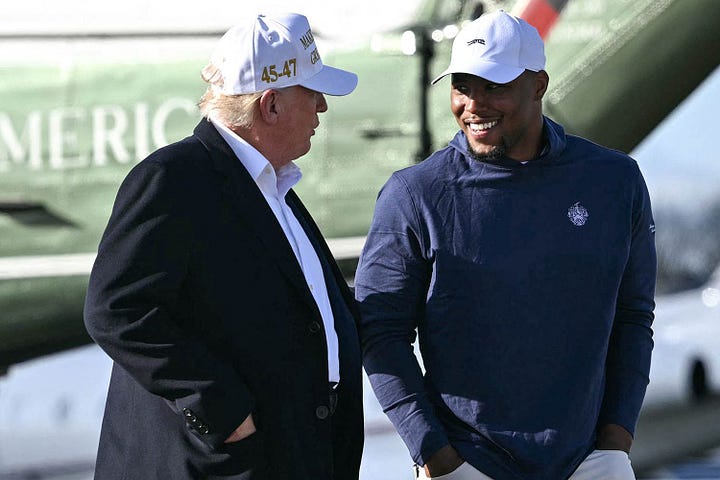
Empire Loves a Silent Black Body
Make no mistake: empire doesn’t fear Black athletes. It funds them, tt lifts them, it rebrands them into something smooth, safe, and saleable, a body that performs, a voice that obeys. So long as they run, jump, catch, and dunk without speaking against the machine, they will be crowned in gold and framed in commercials. They will be celebrated, not for who they are, but for what they allow themselves to become: a spectacle without sound.
Empire does not love you. It loves the story it can tell through you, and only if it’s a story of triumph stripped of politics, sanitized of protest, emptied of rage. It loves the touchdown, the knockout, the buzzer-beater. It loves the slow-motion replay of a Black body in flight, as long as that body never points to the ground it was lifted from, as long as it doesn’t ask who’s still buried beneath it.
The state knows how to worship Black athleticism while erasing Black suffering. It will plaster a mural of your dunk on a courthouse wall and still hand a child in your community 25 years to life. It will name a stadium after your brilliance and leave your people choking on tear gas outside of it.
The quiet, in this era, is more profitable than the roar. That is the lesson too many have learned. Silence isn’t just absence, it’s product. It’s woven into shoe deals, stitched into social media strategies, glossed over by handlers who say, “Now isn’t the right time.” Protest, once spontaneous, has become focus-grouped. Even anger must be managed now, softened by corporate filters, scrubbed of anything that might disrupt the market.
But outside the stadium, the world is burning. Books are banned. Classrooms emptied of truth. Trans children are hunted in legislation dressed up as parental rights. Gaza smolders under the weight of empire. Black life, still, always — remains disposable, its death rebranded as unfortunate rather than unjust.
And still, too many athletes say nothing.
Their silence is not accidental. It is curated. And it is costly; not to them, but to us.
What shall it profit a man to gain the whole world, and lose his people? To sign the largest contract in league history and stand shoulder-to-shoulder with those who built cages for his kin? To smile in commercials while the streets behind them fill with blood and protest?
There is no more neutrality, not in this era, not in this country. Silence is complicity. And complicity is a kind of violence too, just dressed in tailored suits and tunnel walk fits.
The Prophetic Call and the Re-Entry Point
But this is not the end, this is an altar. A place to return to when the lights dim and the applause thins, a place to lay down the shame of silence and pick up the weight of responsibility again — not as punishment, but as practice. Because to fall away from the fight does not mean you cannot come back. The work of liberation has always made room for return.
There are athletes, some with fewer cameras pointed at them, some without national campaigns — who still remember, who understand the long lineage they come from, who know that their body is not just built for speed or strength, but for service. They are building something quieter, deeper, rooted.
WNBA players, for example, didn’t wait for permission. They wore Breonna Taylor’s name not just as a gesture, but as a refusal to play through Black death unnoticed. They spoke out, coordinated boycotts, challenged ownership, and in the case of the Atlanta Dream, helped unseat a MAGA aligned U.S. senator. That is what re-engagement looks like: not just presence, but pressure.
College athletes are organizing for collective bargaining, not just for better pay but for dignity, for medical care, for recognition that their labor has lined pockets for decades while many of their families struggle to pay rent. It’s the reclaiming of the field as a site of labor, not just leisure.
Young Black players, many of them without shoe deals or press coverage are donating to mutual aid funds, bail support, and housing justice movements, not for clout, not for retweets, but because someone once taught them that community is currency.
Re-engagement is not about having the biggest platform. It’s about using whatever platform you have as a launching pad for others. It looks like: Divesting from corporations whose profits are built on prisons, pipelines, and politics of death; speaking anyway, even when PR firms say the risks are too high, even when silence feels easier; creating collectives that aren’t just charitable, but radical spaces where liberation is the mission, not just legacy-building; understanding that visibility without accountability is vanity. That influence without impact is just ego dressed in sweat-wicking fabric.
We don’t need every athlete to be a savior, but we do need them to choose. Because neutrality in a burning house is not safety, it is complicity dressed in calm. And the house is burning: from the classrooms to the courtrooms, from Palestine to the prison yard. There is no middle ground left.
The Fist Is Still Possible
I didn’t plan to write this piece. But something shifted in me the week the Los Angeles Dodgers, the franchise that once integrated Major League Baseball, the team that lifted Jackie Robinson into the harsh, white light of American history walked proudly into the Tr*mp White House, just days before Jackie Robinson Day, and spat on the very legacy they claim to honor.
No protest, no critique, no invocation of the man whose number they wear each spring like sacred cloth. Just grins, photo ops, and a polite nod to the machinery of empire. I started writing that night, heart tight in my chest, wondering what Jackie would have said watching it all, wondering if his ghost turned its back as the cameras flashed.
And then I stopped. I let the draft sit.
Until this week, when two men , two Black men were offered the same choice and gave us two very different answers.
Jalen Hurts, the Eagles quarterback, declined a visit to the Trump White House after his team’s 2025 Super Bowl victory. He didn’t grandstand. He simply said no. A quiet refusal that echoed louder than any touchdown pass he’s ever thrown.
But Saquon Barkley — he said yes. He didn’t just say yes, he walked into the White House, stood beside the man who called for the execution of the Central Park Five, who incited an insurrection, who has promised to rule like a dictator, and he smiled. Not reluctantly, not quietly, but proudly, as if history wouldn’t see him.
And when the criticism came from fans, from elders, from people who have watched this game and this country too long to be fooled, Saquon didn’t apologize. He doubled down, scoffing at the backlash. Said he was “just playing golf” with Trump the day before. As if sharing the green with a would-be tyrant was nothing more than a leisurely Thursday. As if there were no blood in the grass. As if proximity to power was worth more than the people who made him.
That moment pulled me back to this page because we are not in ordinary times, and these are not ordinary choices. These games, this country, this history; they are all watching. The fists of Ali, Smith, Carlos, Russell, Flood, they do not rest. They are clenched still, in the dust, in the rafters, in the soil of every stadium built on stolen land and forgotten names.
And I still love these game. Still feel something stir in my chest when the shot falls, when the base is stolen, when the crowd roars. But I have learned, love is not silence. And gravity is not liberation.
The fist is still possible. It waits in the wrist of every Black athlete, not just as defiance, but as inheritance. Not just in anger, but in memory. Of those who stood, of those who knelt, of those who lost everything to tell the truth.
Let the new generation remember: You are not here just to play. You are here to choose. And there is no more time to pretend you can do both.
Further Reading and References
Books & Essays:
Baldwin, James. The Fire Next Time. Vintage International, 1993.
Coates, Ta-Nehisi. We Were Eight Years in Power: An American Tragedy. One World, 2017.
Bryant, Howard. The Heritage: Black Athletes, a Divided America, and the Politics of Patriotism. Beacon Press, 2018.
Robeson, Paul. Here I Stand. Beacon Press, 1998.
Smith, Tommie. Silent Gesture: The Autobiography of Tommie Smith. Temple University Press, 2007.
Ali, Muhammad, and Richard Durham. The Greatest: My Own Story. Graymalkin Media, 2015.
Russell, Bill. Second Wind: The Memoirs of an Opinionated Man. Ballantine Books, 1979.
Zirin, Dave. The Kaepernick Effect: Taking a Knee, Changing the World. The New Press, 2021.
Rhoden, William C. Forty Million Dollar Slaves: The Rise, Fall, and Redemption of the Black Athlete. Crown Publishing, 2006.
Articles & Interviews:
“Colin Kaepernick Took a Knee. Then the NFL Took His Career.” The New York Times, 2020.
“WNBA Players Help Oust Atlanta Dream Co-Owner Kelly Loeffler.” The Guardian, 2021.
“Patrick Mahomes Avoids Political Questions Amid Racial Tensions.” ESPN, multiple reports, 2020–2024.
“Saquon Barkley Criticized for Trump Visit, Responds to Backlash.” Bleacher Report, February 2025.
“Jalen Hurts Declines Trump White House Visit After Eagles’ Super Bowl Win.” The Philadelphia Inquirer, February 2025.
“Dodgers Visit White House Before Jackie Robinson Day.” Los Angeles Times, April 2025.
Multimedia & Speeches:
Citizen Ashe (Documentary), HBO, 2021.
Ali (Documentary), PBS American Masters, 2021.
Paul Robeson’s HUAC Testimony, 1956 – “You are the Un-Americans, and you ought to be ashamed of yourselves.”
1967 Cleveland Summit Press Conference – Jim Brown, Muhammad Ali, and other Black athletes supporting Ali’s refusal of the draft.




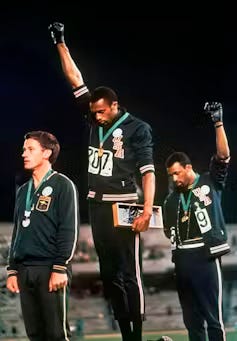
This was a very informative piece. I remember the Olympics when Tommie Smith and John Carlos raised their fists. Then in 1973 I was a transfer student to Oberlin College. Tommie was the track coach. I never interacted with him personally but it was a feather in the cap for the school that he was there.
Great piece. I’m absolutely disgusted with the current Dodgers.
Here’s another book to consider adding to the list, my cousin who was a sportswriter with the LA Times for many years wrote this one: https://www.nebraskapress.unl.edu/nebraska/9781496211774/something-in-the-air/